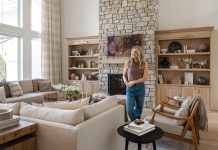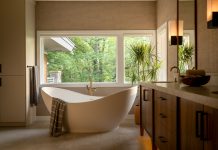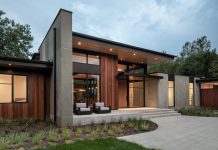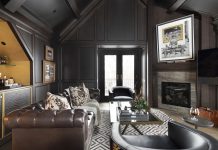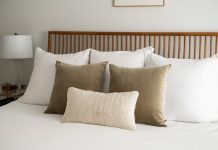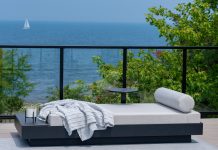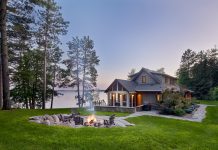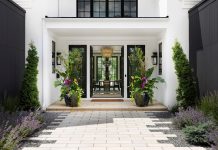Photos provided

MH: What’s trending in the world of rugs?

CAR: One of the newest trends we are witnessing is the gravitation towards the vintage/distressed look in rugs. These are brand-new woven rugs that undergo tremendous aging processes like oxidization and other procedures to achieve the desirable look of an old rug, [but with] more subtle colors and texture at a fraction of the price of an old rug. Most of these vintage-inspired designs incorporate the traditional motifs found in antique designs with muted colors that bring the whole thing together. They’re subtle, gracious, beautiful, and simply timeless. Also trending are neutral, monochrome textured rugs with a natural wool fiber base and real silk, viscose, and other fibers that highlight the texture.
Lastly, Moroccan-style rugs have gained popularity in the last few years for clients who are looking for more of a boho-chic and coastal style of decorating. They tend to have imperfect, primitive designs that can be produced with both neutral or bright, primary colors—all with a shaggy pile to give them a comfortable and casual feel.
What about Turkish rugs?
Turkish rugs tend to have an originality that other countries can’t reproduce. Their designs are perfectly imperfect; the colors are softer and look more aged; and their texture and finish are less formal and [more] favorable with the sheen they possess. Designers and clients prefer the Turkish style of rug since they provide a one-of-a-kind look and [are] more original than others. They use Turkish knots—which is a double knot as opposed to single—leaving between one to two rows of wefts between each row of knots. This technique allows the rug more flexibility and faster weaving time.

How do you guide someone in finding the perfect rug for their space?
The initial process—the discovery stage—in finding the perfect rug for a client is to understand their daily lifestyle. What look and functionality are they trying to achieve in terms of style, colors, and practicality? We ask them to provide us with inspirational ideas they may have seen in design magazines or [other] sources that caught their attention. Narrowing [down] the perfect size is one of the most essential parts of shopping for rugs. What are their favorite styles and colors? Do they prefer a more modern, transitional, or traditional style? Lastly, we ask about the amount of traffic and use the rug will have in the space and the budget they want to allocate for it.
We have rugs organized by size, design, and collection in order to locate [them] much quicker. We know how valuable our clients’ time is. Since finding the best rug can sometimes be a lengthy process, we do everything in our power to reduce that without compromising the quality of our service and experience.
In some cases, people cannot decide right on the spot, so we offer a complimentary house call or let them take as many rugs as they want home just to [check] which rugs work best in their space. We always say, “The rug claims its place once it’s in the right space.”
Buying a good rug is more of an investment than an expense, and if cared for properly, most rugs will outlast all of us. They make a great gift to be passed down to younger generations and can stay in families for well over a century or more without any problems.
Do you have any advice for rug layering?
The idea of layering rugs has been around for many years, but it was made even more popular by the talented and legendary designer Ralph Lauren. Make sure the top rug is smaller than the bottom or it is at least two-thirds of the size of the bottom rug. The main purpose of layering rugs is to highlight an area in the room and give you the ability to experiment with various colors, designs, and textures that you normally wouldn’t get with only one rug.
Anything else you want to add?
Each trend we’ve discussed here has a different popularity in various areas of the United States. Trends in Minneapolis are more varied [because] our clients have a wider range of taste in styles and colors. Climate, depending on the geographical location, also plays a large role. Colder cities don’t mind adding more colors to warm up the atmosphere of their home, while warmer cities prefer more minimalist designs with more neutral or cooler colors.




